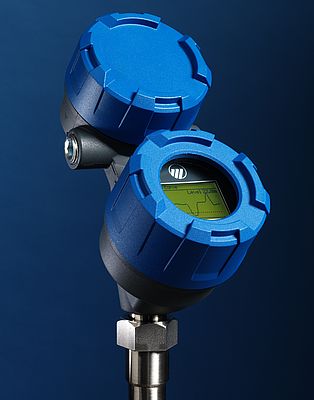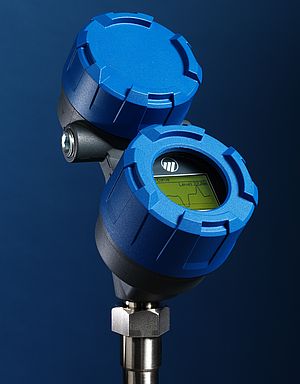All process industries today require the ability to safely and accurately measure level in critical applications. This task, however, can be complicated by a variety of factors, including process media that are very low dielectric or those that contain corrosive vapors, foam, steam, buildup, agitation, bubbling or boiling.
Guided wave radar (GWR) technology, which is the operating principle used by the Eclipse® Model 706 transmitter from Magnetrol®, provides true level and interface control for applications across many process industries, including petroleum refining, electric power generation, chemical manufacturing, water and wastewater, pulp and paper, pharmaceutical processing and food and beverage. To ensure that you implement an optimal solution for your company, it is important to learn about some of the innovative features that the most reliable GWR solutions offer. The remainder of this post will discuss 6 features that you should look for when you are considering GWR technology as a possible solution for level measurement.
Signal Performance
While many GWR options on the market today promote the amplitude (size) of transmitted radar pulse, a far more important parameter for reliable level measurement in difficult applications is the overall signal-to-noise ratio (SNR). The ECLIPSE Model 706 features an innovative (patent-pending) design concept (called Diode Switched Front End) that can dramatically reduce the impact of noise and increase overall GWR transmitter performance. This new circuit design completely isolates the transmit path from the receive path, thereby maximizing receiver sensitivity and impedance matching.
Complete Line of Probes
The type of probes that a GWR solution offers is another key consideration. Look for a GWR transmitter that offers an extensive line of dedicated coaxial, single and twin rod probes to handle a variety of level challenges.
Some GWR devices feature probes that have a transition zone at the top where interacting signals can affect the linearity of the measurement or result in a loss of signal. The ECLIPSE Model 706 offers overfill safe probes which have a predictable and uniform characteristic impedance across the entire length of the waveguide. This allows the GWR to measure accurate levels, to within specification, all the way up to the process flange without any non-measureable zones at the top of the probe.
Advanced Diagnostics
Look for those GWR transmitters on the market that offer advanced diagositc capability,such as having the ability to save echo curve and diagnostic information based on Time (using an on-board clock) or a key Event (such as Loss of Echo or Low Echo Strength). The transmitter should have the ability to store a number of echo curves in its on-board memory, which can then be downloaded for troubleshooting.
Newer GWR devices also meet the NAMUR NE 107 standard. This relatively new standard allows the user to categorize diagnostic indicators in a way that suits their specific needs. The more advanced GWR transmitters incorporate this diagnostic scheme to allow much greater flexibility for the sophisticated user.
Output Types
Typical GWR devices provides an analog 4-20 mA signal with HART, or FOUNDATION fieldbus digital communication output. The GWR solution you are considering should accommodate both HART® and FOUNDATION fieldbus™ communications protocols.
Convenient Pre-Configuration
Some GWR transmitters can be supplied "pre-configured" from the manufacturer. One step closer to plug-and-play, a pre-configured device allows you to virtually take the transmitter out of the box, apply 24 VDC to it and walk away, thereby greatly reducing installation time. Look for the manufacturer that offers this service at no additional cost.
Advanced Installation Capabilities
While most GWR transmitters are mounted directly onto the probe, some can be remote mounted up to 12 feet (3.6 meters) away from the probe to meet the needs of applications that may involve high temperature or vibration - or to simply increase ease of viewing for technicians. Some GWR units, like the ECLIPSE Model 706, also offer a quick-disconnect probe coupling that eases installation and servicing by allowing full 360° rotation of the transmitter housing. To orient the transmitter, the user simply selects the desired transmitter position, tightens the coupling and completes the wire terminations.




















